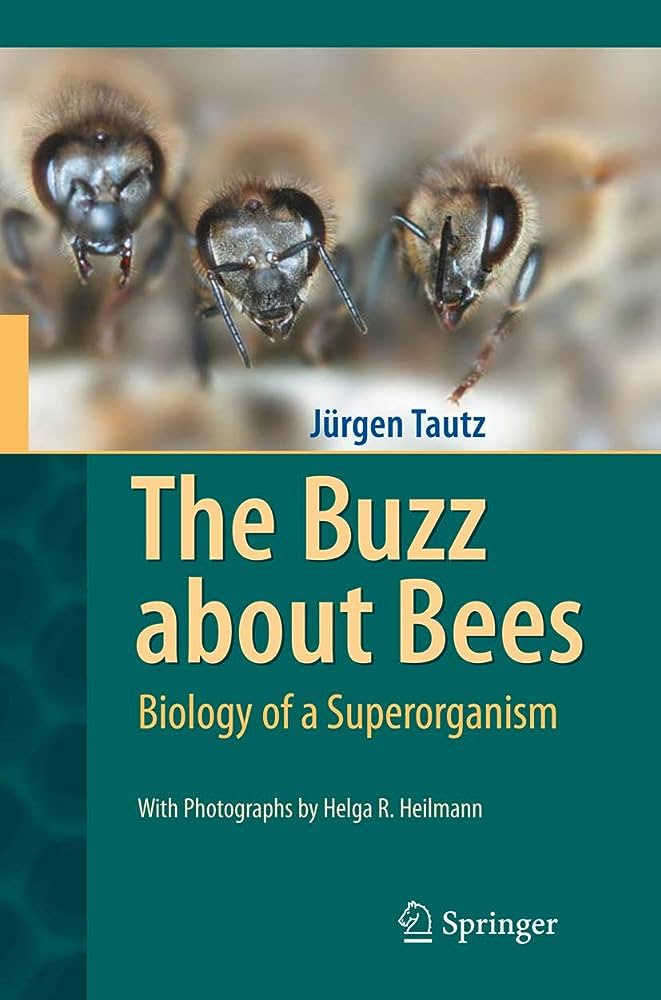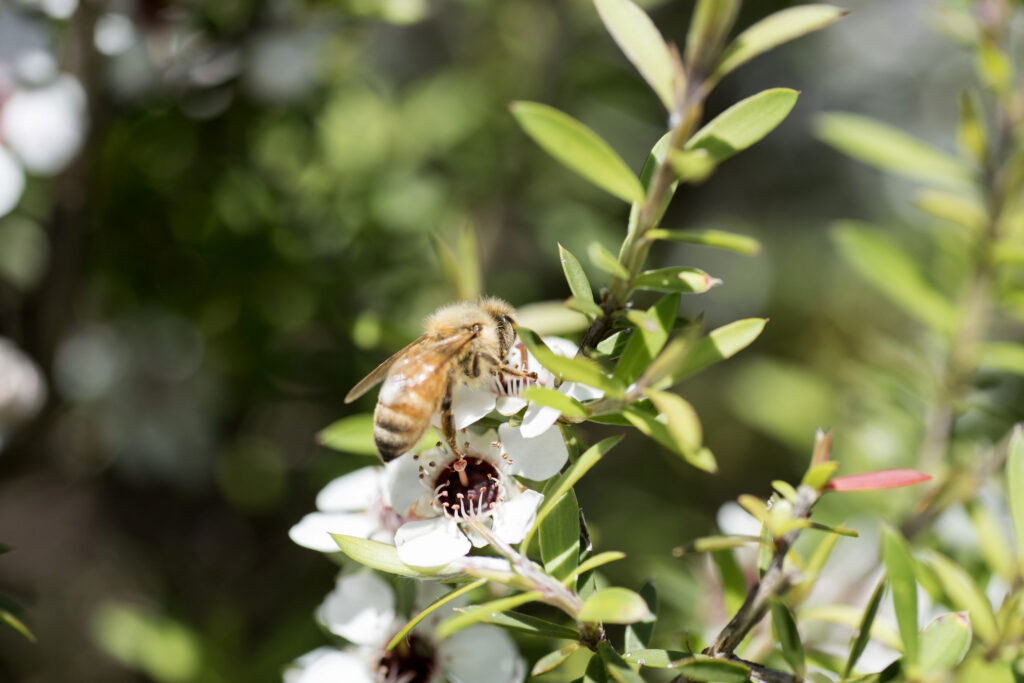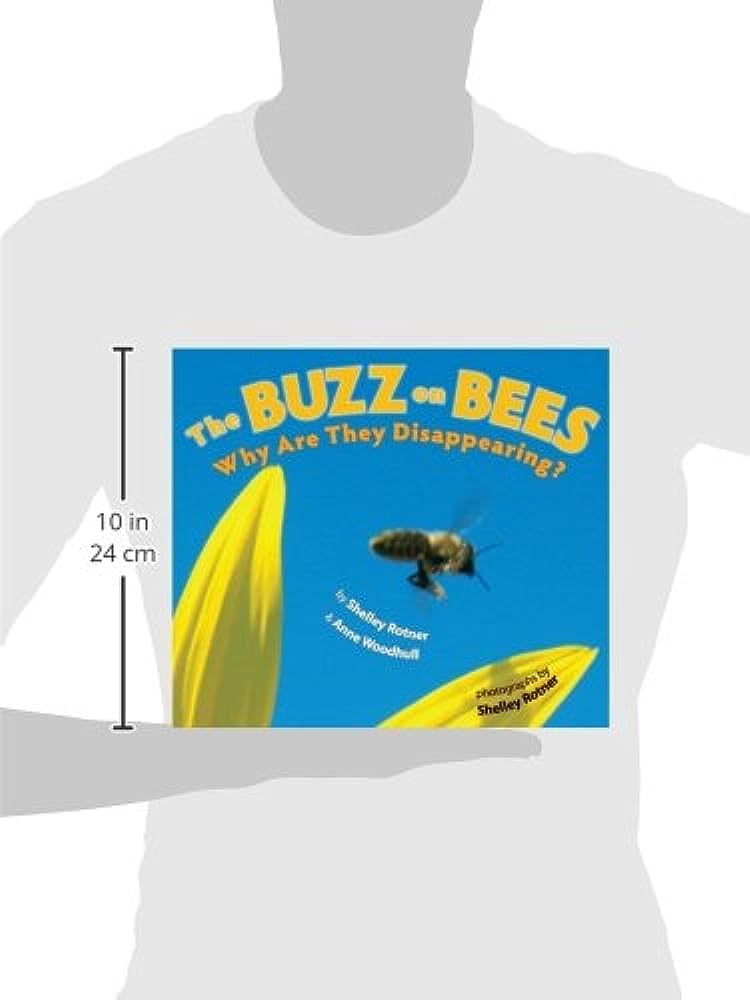
You’re about to embark on an exciting journey into the world of bees, trees, and the delightful creation they produce: Manuka honey. In this article, we’ll uncover the fascinating relationship between these three elements and learn how they contribute to the production of this unique and highly sought-after honey. Buckle up and get ready to discover the buzzing world of bees and their vital role in the creation of Manuka honey.
The Importance of Bees in Ecosystems
Bees play an essential role in ecosystems as pollinators. They are responsible for transferring pollen from the male parts of a flower to the female parts, allowing plants to reproduce. This process, known as pollination, is crucial for the production of fruits, seeds, and nuts. Without bees, many plant species would struggle to reproduce and could eventually disappear, leading to a cascade of negative effects on the entire ecosystem.
The essential role of bees as pollinators
Bees are one of the most important pollinators due to their unique biology and behavior. They have specialized body parts, such as the proboscis and hairy legs, which allow them to gather pollen and transport it to other flowers. As they move from flower to flower, they unintentionally transfer pollen, enabling the fertilization process. This cross-pollination not only contributes to plant reproduction but also increases genetic diversity within plant populations.
The decline of bee populations and its impact
In recent years, there has been a concerning decline in bee populations worldwide. Factors such as habitat loss, pesticide use, climate change, and diseases have contributed to this decline. This decrease in bee populations has severe consequences for both natural and agricultural ecosystems. Many plant species rely solely on bees for pollination, and without them, these plants may be unable to reproduce. This loss of pollinators can lead to a decrease in plant diversity, which has a direct impact on other species that depend on these plants for food and habitat.
The interdependence between bees and plants
Bees and plants have a mutually beneficial relationship known as mutualism. Bees rely on the nectar and pollen produced by plants as their main source of food. In return, bees assist in plant reproduction through pollination. This interdependence is critical for the survival of both bees and plants. Bees ensure the survival of plant species through pollination, while plants provide resources for bees, such as food and shelter. Without this relationship, many plant species would struggle to survive, and the overall health and stability of ecosystems would be compromised.
Introduction to Manuka Trees and Honey
Overview of Manuka trees
Manuka trees, also known as tea trees, are native to New Zealand and have gained recognition for their unique properties. These evergreen shrubs or small trees have small leaves and beautiful white or pink flowers. Manuka trees thrive in a variety of habitats, from coastal areas to mountainous regions, and they play a significant role in the ecological landscape of New Zealand.
The unique properties of Manuka honey
Manuka honey is a type of honey produced by bees that pollinate Manuka trees. What makes this honey truly remarkable is its exceptional antibacterial and antimicrobial properties, which set it apart from other types of honey. This unique quality is due to the presence of a compound called methylglyoxal (MGO) in the nectar of Manuka flowers. The higher the concentration of MGO in the honey, the greater its antibacterial potency.
Traditional uses of Manuka honey
For centuries, Manuka honey has been treasured by indigenous communities for its medicinal properties. The Maori, the indigenous people of New Zealand, have used it as a natural remedy for various ailments, including sore throats, digestive issues, and skin conditions. They also recognized its role in wound healing and used it as a topical treatment. Today, Manuka honey is not only valued for its traditional uses but has also gained recognition in modern medicine and skincare industries.
The Relationship between Bees, Trees, and Manuka Honey
Bees as pollinators of Manuka trees
Bees are vital for the pollination of Manuka trees. As they visit the flowers in search of nectar, they inadvertently transfer pollen from the male parts of one flower to the female parts of another. This cross-pollination process is essential for the trees to produce seeds and ensure the continuation of the species. Through their diligent work as pollinators, bees help maintain the biodiversity and ecological balance of Manuka tree populations.
How bees collect nectar and produce honey
When bees visit Manuka flowers, they collect nectar using their proboscis, a long straw-like tongue. They store the nectar in a specialized honey stomach, separate from their regular stomach, which allows them to transport it back to the hive. Once at the hive, the bees regurgitate the nectar into wax cells where it is further processed.
The process of creating Manuka honey
After the nectar is brought back to the hive, it undergoes a transformation. The bees add enzymes to the nectar, which convert its sugars into glucose and fructose. Through a process known as enzymatic activity, the bees then dehydrate the nectar by fanning their wings, reducing its moisture content and thickening it into honey. Finally, the honey is capped with beeswax and stored as a source of food for the bee colony.
The Complementary Roles of Bees and Trees
The mutualistic relationship between bees and trees
Bees and trees have a mutually beneficial relationship, where both parties depend on each other for survival. Bees rely on trees for food and shelter, while trees require bees for pollination. This mutualism is crucial for maintaining healthy ecosystems as it promotes biodiversity, enhances plant reproduction, and supports the overall health of both bees and trees.
How trees provide resources for bees
Trees provide bees with a diverse range of resources. The flowers of different tree species offer bees abundant sources of nectar and pollen, which are essential for their survival. Additionally, trees offer bees shelter and nesting sites, providing protection from predators and the elements. The presence of trees in the landscape is vital for the long-term sustainability of bee populations.
The impact of bee pollination on tree reproduction
Bee pollination plays a significant role in tree reproduction. By transferring pollen from one flower to another, bees facilitate the fertilization process, leading to the production of seeds, fruits, and nuts. This reproductive success is vital for the survival and genetic diversity of tree populations. In turn, trees offer bees a reliable source of food, ensuring their continued survival and thriving.

The Extraordinary Qualities of Manuka Honey
Unique chemical composition and health benefits
Manuka honey stands out from other types of honey due to its distinctive chemical composition. The presence of methylglyoxal (MGO), a compound with potent antimicrobial properties, gives Manuka honey its exceptional healing capabilities. Scientific research has shown that Manuka honey has anti-inflammatory, antioxidant, and antibacterial properties, making it beneficial for a wide range of health conditions.
Medical and therapeutic applications
Manuka honey’s unique properties have made it a sought-after natural remedy in the medical field. It has been used to treat wounds, burns, and infections due to its antimicrobial effects and ability to promote tissue regeneration. Additionally, Manuka honey has been explored for its potential in managing conditions such as gastrointestinal disorders, sore throat, and skin conditions like acne, eczema, and psoriasis.
The grading system for Manuka honey
To ensure the quality and efficacy of Manuka honey, it undergoes a grading system known as the Unique Manuka Factor (UMF). This system measures the levels of key compounds, such as MGO and hydrogen peroxide, to determine the honey’s potency. Higher UMF ratings indicate a higher concentration of beneficial compounds and greater therapeutic potential. It is important for consumers to look for certified UMF labels when purchasing Manuka honey to ensure its authenticity and quality.
Conservation Efforts to Protect Bees and Trees
Challenges facing bee conservation
The decline in bee populations is a cause for concern, and various challenges must be addressed to protect these crucial pollinators. Habitat loss due to urbanization, agricultural intensification, and deforestation poses a significant threat to pollinator species. Pesticide use, including neonicotinoids, can harm bees and impair their reproductive abilities. Climate change, with its impacts on flower blooming times and availability of food sources, also affects bee populations.
Initiatives to promote bee-friendly practices
To protect bee populations, there are initiatives worldwide promoting bee-friendly practices. Awareness and educational programs aim to inform the public about the importance of bees and the actions they can take to support their conservation. Organic farming practices that avoid the use of harmful pesticides help create safe habitats for bees. Creating and preserving pollinator-friendly habitats, such as wildflower meadows, can provide bees with diverse food sources and nesting sites.
Preservation of Manuka tree habitats
Preserving the habitats of Manuka trees is crucial for the sustainability of both bees and Manuka honey production. Ensuring the conservation of natural forests and establishing protected areas for Manuka trees safeguard their populations. It is important to manage land use practices and prevent deforestation and habitat degradation to maintain the delicate balance between bees, trees, and the production of this unique honey.

The Economic Importance of Beekeeping and Honey Production
The beekeeping industry and honey production
Beekeeping is not only ecologically important but also an economically valuable industry. Beekeepers play a crucial role in honey production by managing bee colonies and harvesting honey. Honey production generates income and employment opportunities for beekeepers, honey processors, and related industries. The demand for honey continues to rise globally, creating a market for beekeepers to sell their products.
Global trade and market trends
Honey is a highly sought-after commodity worldwide, resulting in significant global trade. Different varieties of honey, including Manuka honey, have gained popularity and are exported to countries around the world. The unique properties and reputation of Manuka honey have created a niche market, with consumers willing to pay a premium for its exceptional quality. This global trade contributes to the economic growth of regions where honey production is a significant industry.
Sustainable practices in honey harvesting
To ensure the long-term sustainability of honey production, beekeepers are adopting sustainable practices. This includes responsible hive management, such as avoiding overharvesting and providing adequate food sources for bees. Beekeepers also strive to minimize the use of chemicals and pesticides, opting for organic and natural methods when possible. Sustainable honey harvesting practices prioritize the health and well-being of both bees and their habitats.
Cultural and Indigenous Perspectives on Bees and Honey
Historical significance of bees and honey in cultures
Bees and honey have held a significant place in human history and cultural practices for thousands of years. Many ancient civilizations, such as the Egyptians and Greeks, revered bees and honey for their perceived healing properties and spiritual symbolism. Bees and honey have often been associated with fertility, abundance, and wisdom. Cultures around the world have incorporated bees and honey into rituals, ceremonies, and traditional beliefs.
Rituals, folklore, and symbolic meanings
Bees and honey have found their way into the folklore and symbolic representations of various cultures. The industrious nature of bees, their intricate social structure, and the golden liquid they produce have often been associated with hard work, community, and prosperity. This has led to the use of bees and honey in rituals and ceremonies celebrating harvests, fertility, and new beginnings.
Integration of Manuka honey in traditional practices
Indigenous communities, such as the Maori, have a longstanding relationship with bees and honey. Manuka honey holds cultural significance for these communities and has been used in traditional practices for generations. Its healing properties make it an important ingredient in natural remedies and traditional medicine. The integration of Manuka honey into cultural practices reinforces the connection between indigenous communities and their natural environment.

Scientific Research and Discoveries
Studies on the ecological benefits of bees
Scientific research has highlighted the critical role that bees play in maintaining ecological balance. Studies have shown that bee pollination contributes to increased crop yields, enhancing food security and agricultural productivity. Bees also contribute to the pollination of wild plants, promoting biodiversity and supporting the survival of various species. Furthermore, bees’ activity in transferring pollen between plants aids in the gene flow, maintaining genetic diversity within populations.
Investigations into the medicinal properties of Manuka honey
The exceptional healing properties of Manuka honey have attracted attention from the scientific community. Researchers have conducted studies investigating its effectiveness in wound healing, combating antibiotic-resistant bacteria, and even in the treatment of certain types of cancer. The chemical composition of Manuka honey, particularly its high levels of MGO, has been the subject of numerous studies, revealing its potential as a valuable therapeutic agent.
Innovations in beekeeping techniques
Advancements in beekeeping techniques have emerged as a response to the challenges faced by bees and the beekeeping industry. One such innovation is the development of alternative hive designs that aim to improve bee health and reduce stress. This includes designs that mimic natural bee habitats and promote a healthier colony. Additionally, advancements in on-site hive monitoring and disease detection tools help beekeepers identify and address potential threats to their colonies promptly.
Future Perspectives: Sustainable Beekeeping and Biodiversity
Importance of sustainable beekeeping practices
The future of beekeeping relies on the adoption of sustainable practices. Beekeepers are increasingly focusing on maintaining healthy bee colonies, ensuring adequate food sources, and reducing the use of chemicals. Promoting biodiversity and preserving natural habitats are also crucial in creating resilient ecosystems that support bee populations. Emphasizing sustainable beekeeping practices ensures the long-term survival of bees and their vital role as pollinators.
Promoting biodiversity through bee conservation
Conserving bee populations goes hand in hand with promoting biodiversity. The preservation of natural habitats and the creation of pollinator-friendly environments contribute to the protection and proliferation of a wide range of plant species. By protecting pollinators like bees, we safeguard the diversity of flowering plants, which in turn supports a diverse array of other organisms in the ecosystem. Biodiversity conservation efforts benefit not only bees but also the overall health and functioning of ecosystems.
Potential future developments in honey production
In the future, honey production may witness further advancements and innovations. As research delves deeper into the chemical and biological properties of honey, new and more effective applications may emerge. The development of techniques for sustainable honey production, such as novel hive designs and beekeeping practices, may enhance both honey quality and bee health. With ongoing scientific research and a commitment to sustainable practices, the future of honey production holds promising possibilities.
In conclusion, the intricate relationship between bees, trees, and Manuka honey showcases the interdependence and importance of each component. Bees as pollinators ensure the reproduction and biodiversity of plants, while trees provide essential resources and shelter for bees. Manuka honey, with its exceptional properties and cultural significance, serves as an example of the remarkable benefits that can arise from this symbiotic relationship. As we strive to protect and sustain these valuable components of our ecosystem, it is crucial to nurture and support bees, trees, and the production of unique and beneficial honey.

